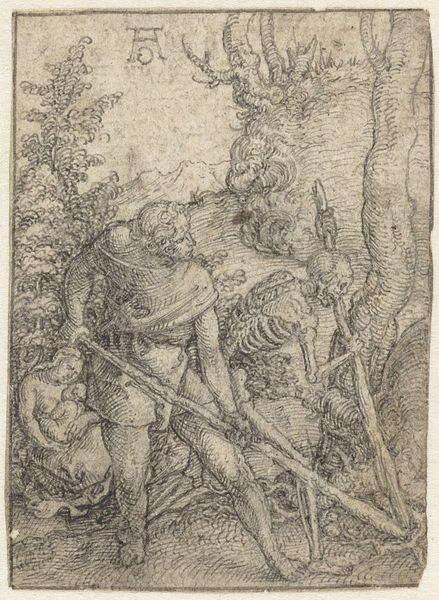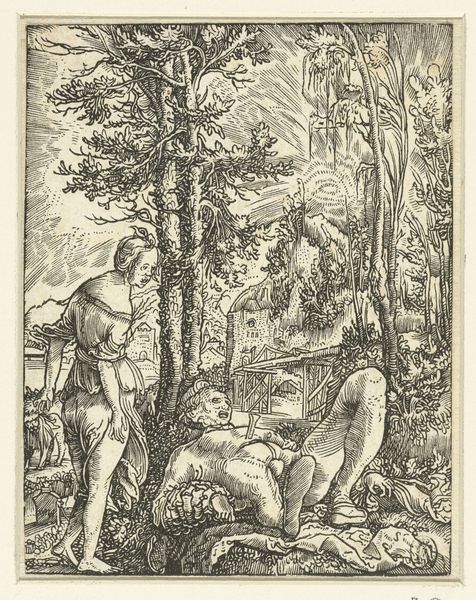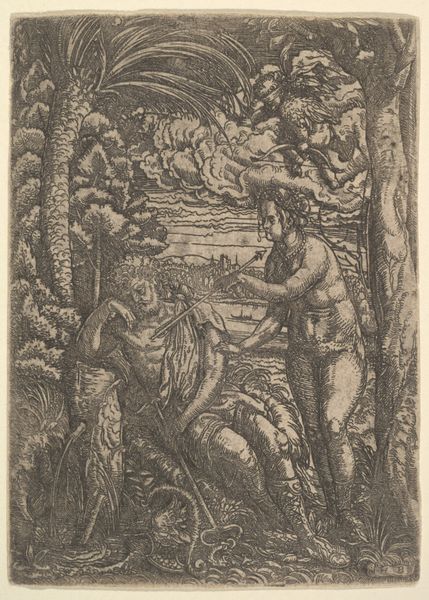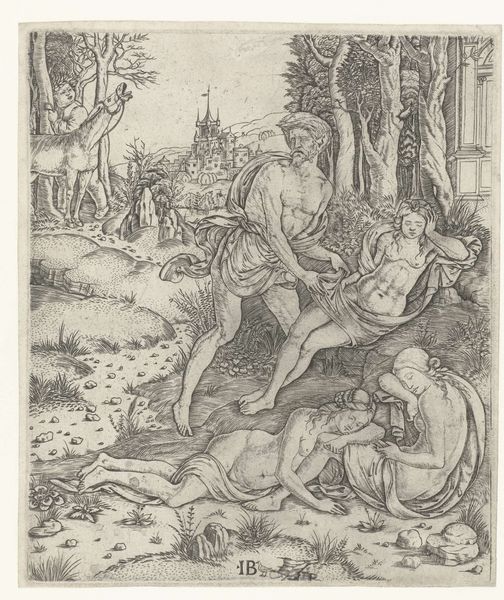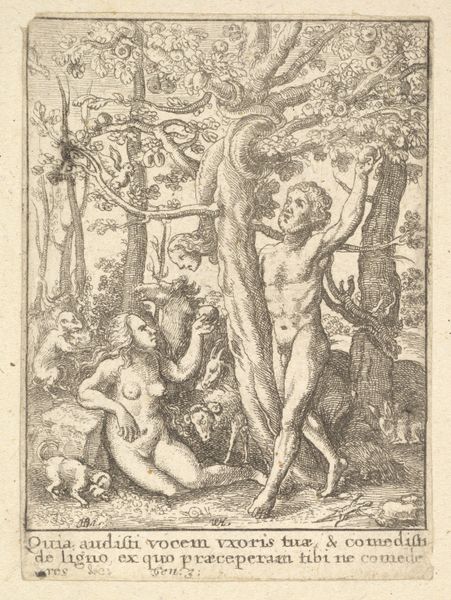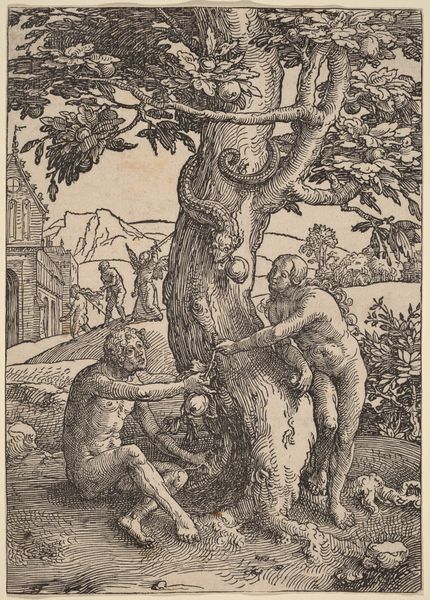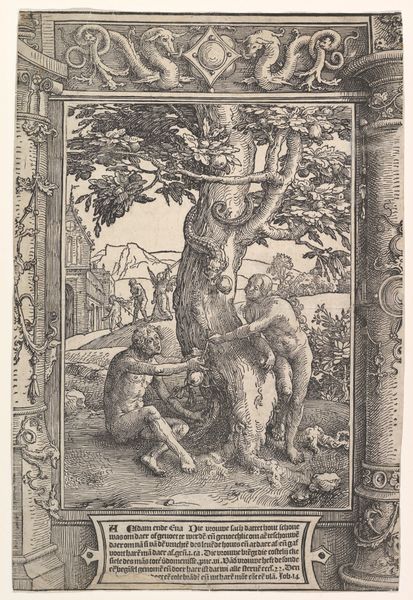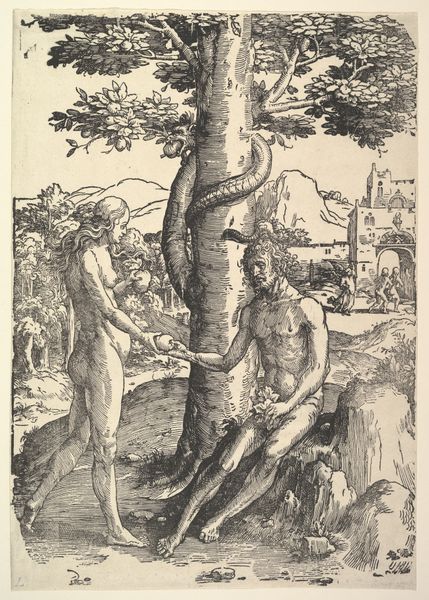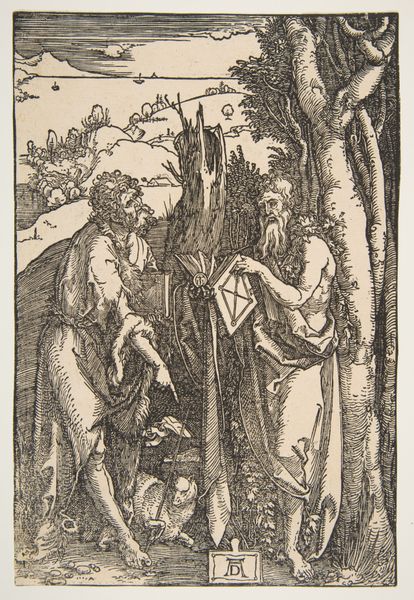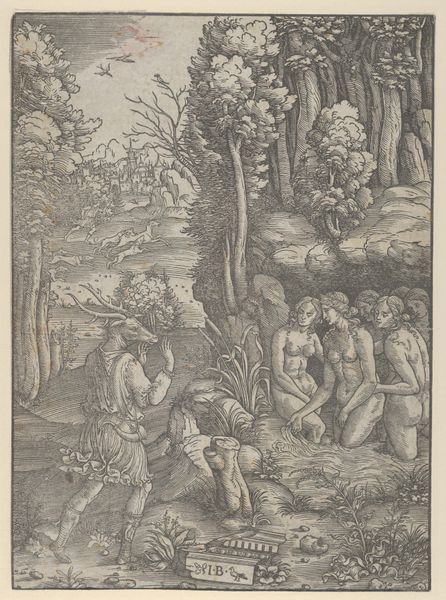
print, etching
# print
#
etching
#
landscape
#
figuration
#
history-painting
#
northern-renaissance
#
nude
Dimensions: height 406 mm, width 287 mm
Copyright: Rijks Museum: Open Domain
Lucas van Leyden made this print, 'The Fall of Man', using an engraving technique sometime in the early 16th century. Engraving is an intaglio process; the artist uses a tool called a burin to manually incise lines into a metal plate, which holds ink and transfers the image to paper. The controlled, deliberate nature of engraving allowed Lucas van Leyden to achieve fine detail and tonal variation in the image, evident in the figures' musculature, the textures of the tree bark, and the subtle gradations of light and shadow. This printmaking technique demanded a high degree of skill and control, differentiating it from the more direct, gestural qualities of drawing or painting. In its time, this print would have been relatively easy to reproduce and circulate, making art more accessible to a wider audience. The work's social impact lies in this dissemination of images and ideas, achieved through skilled labor and the mechanics of reproduction. So, in a way, even this image of original sin is tied up with human ingenuity.
Comments
No comments
Be the first to comment and join the conversation on the ultimate creative platform.
